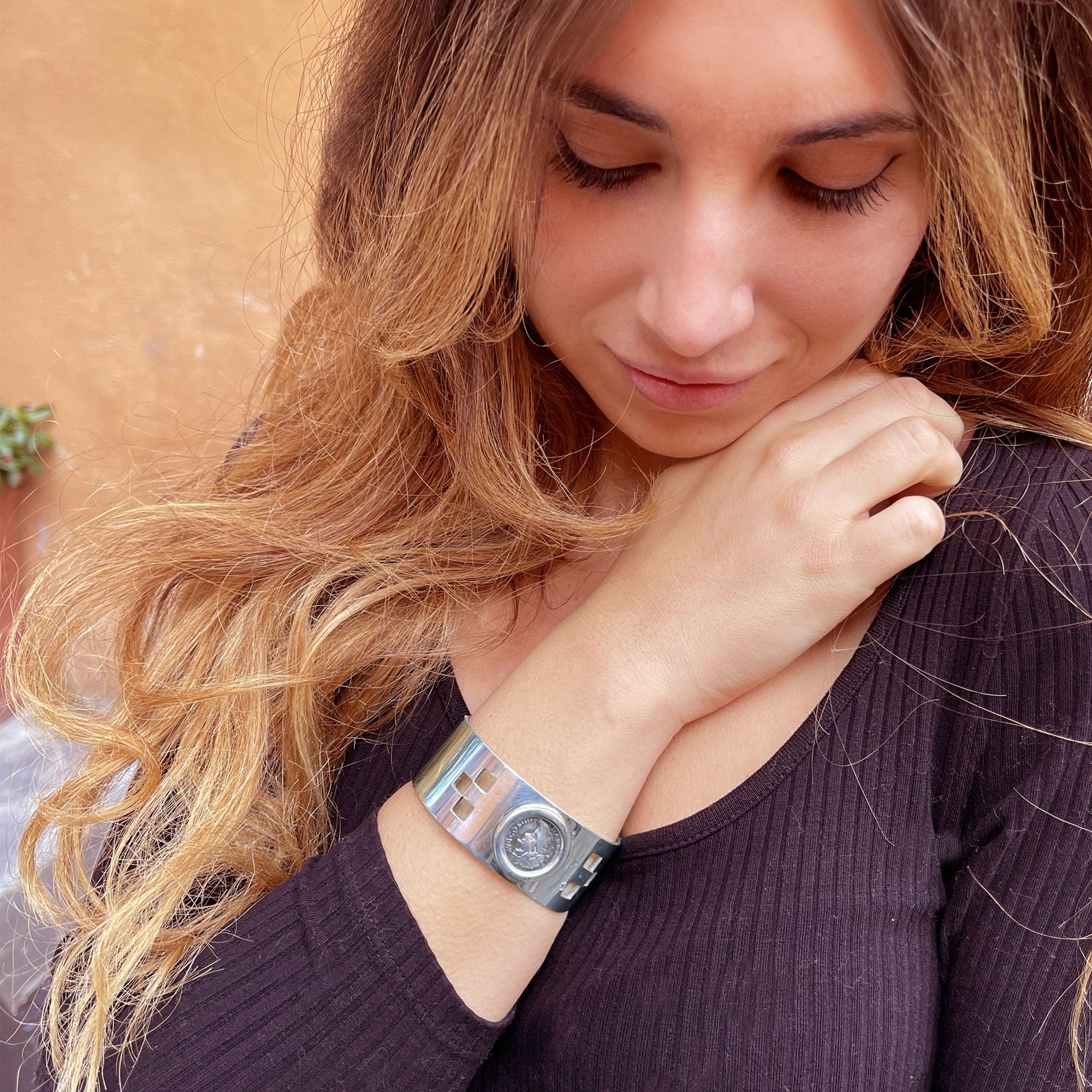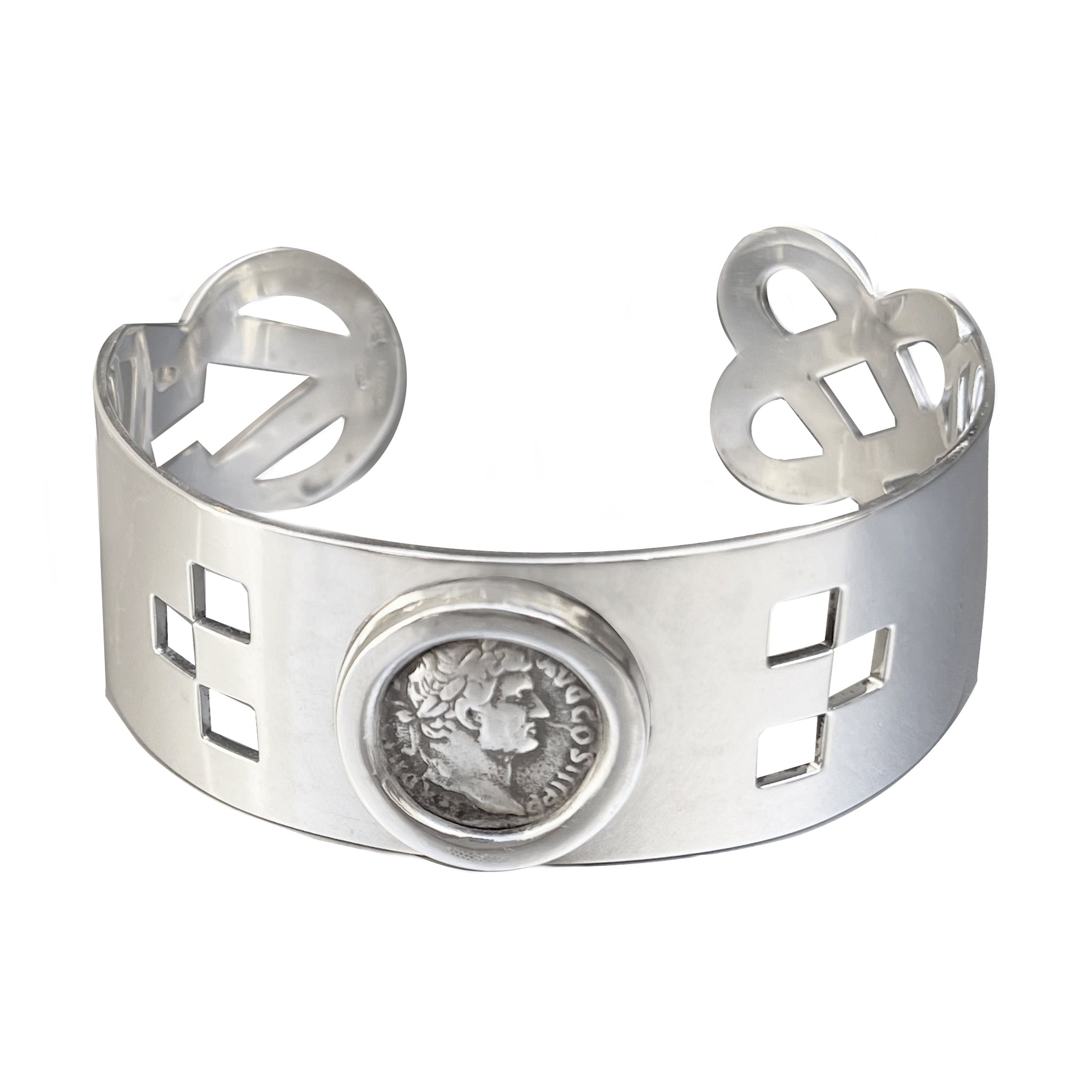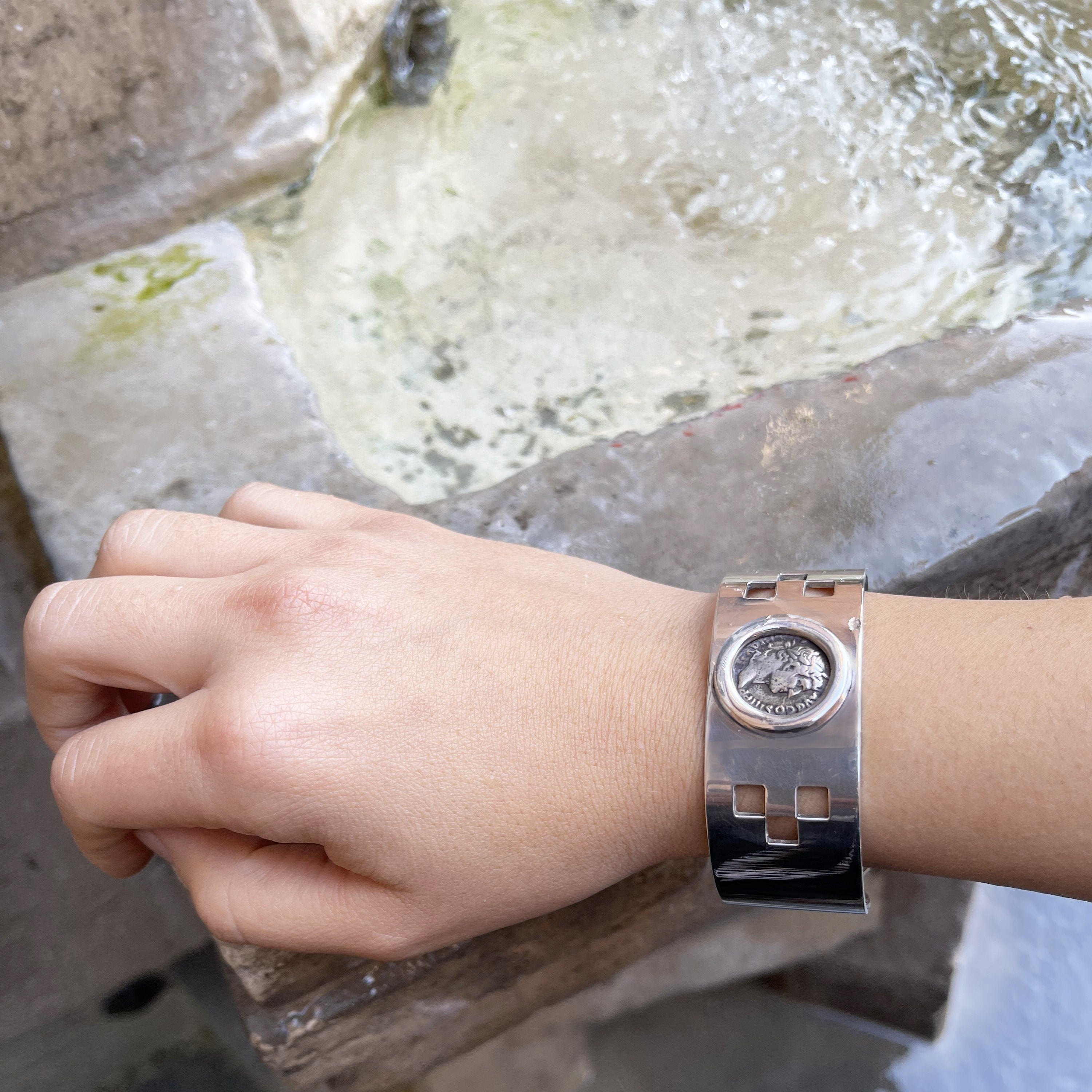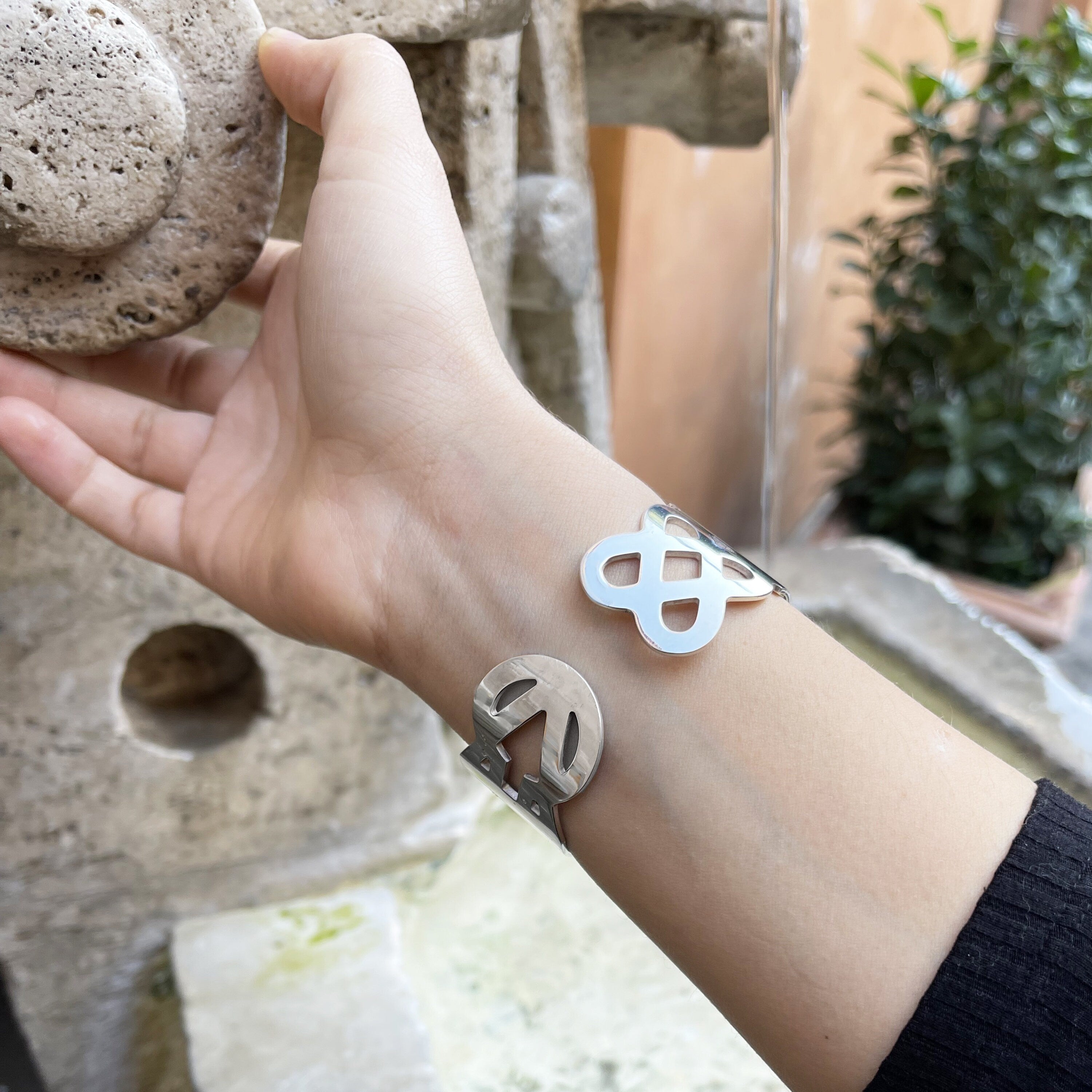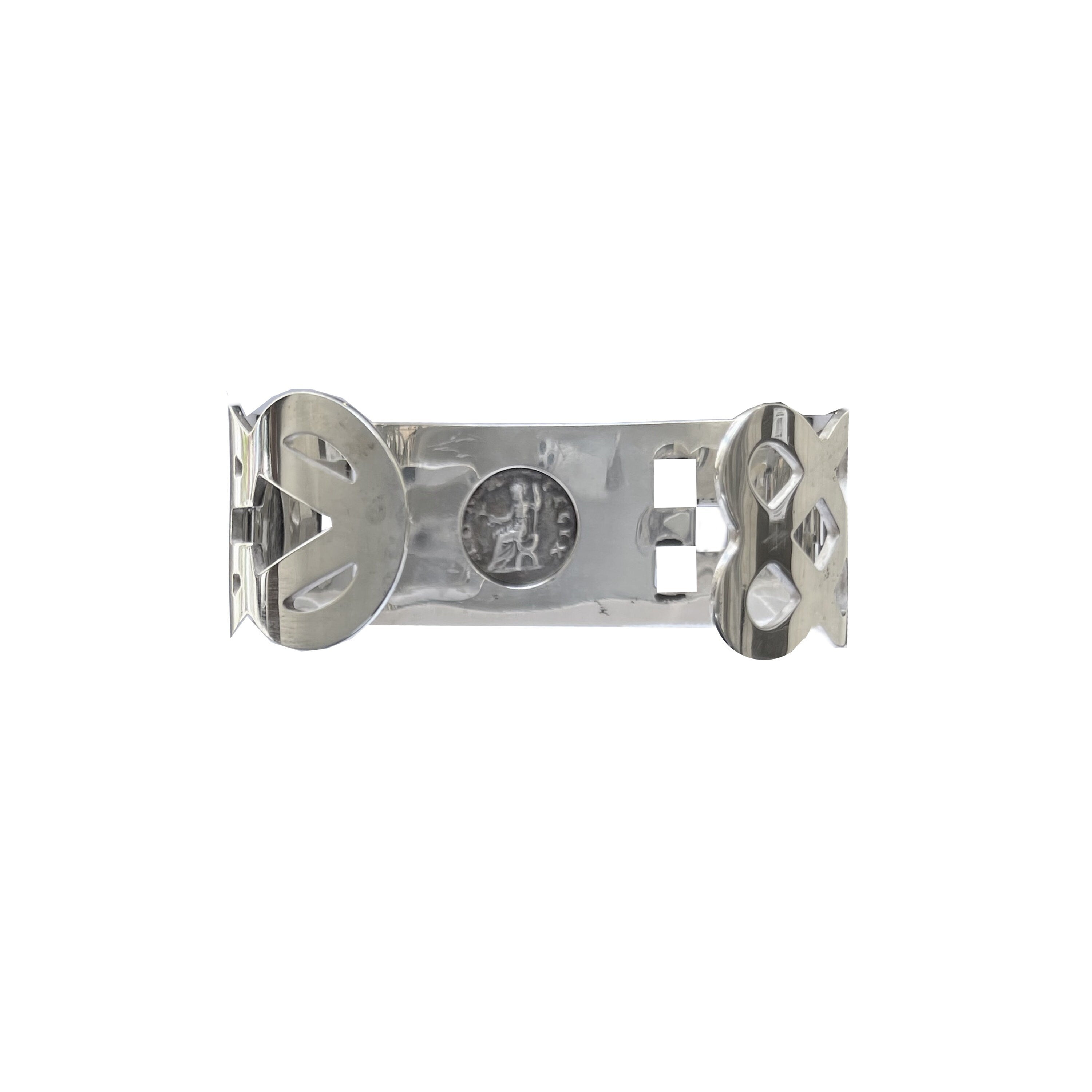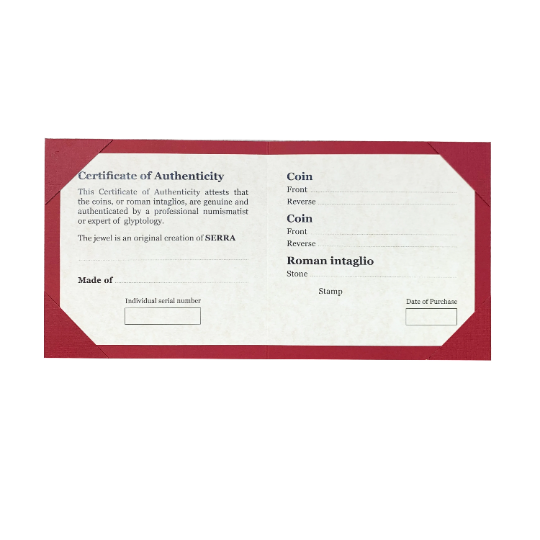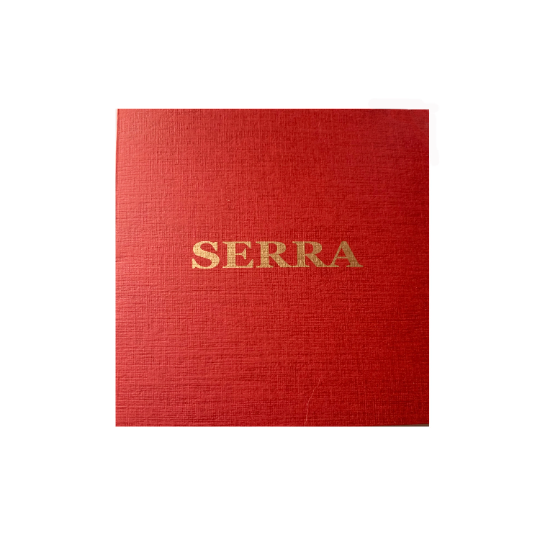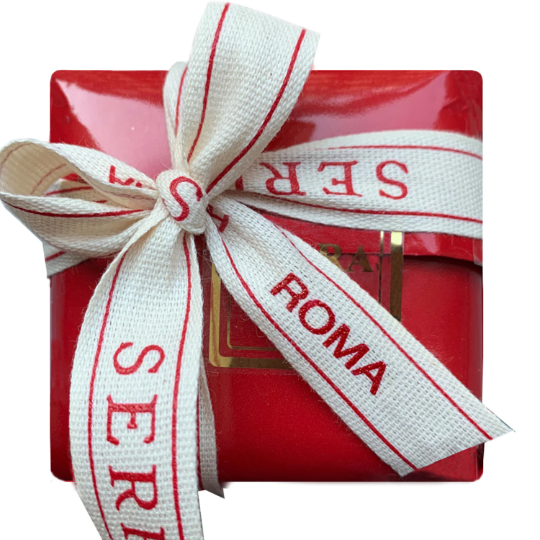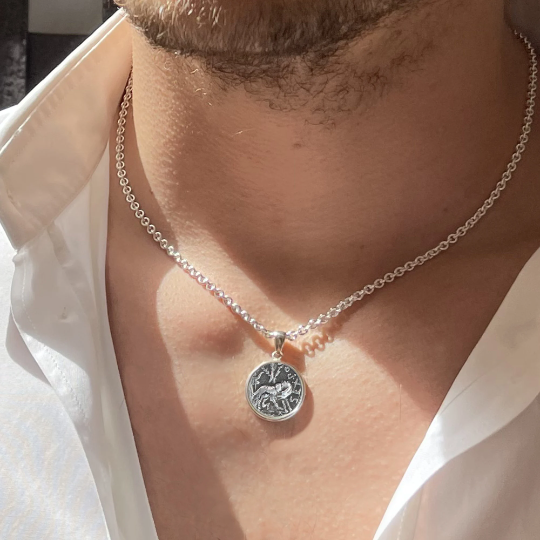Authentic Roman coin Silver Bracelet depicting Emperor Hadrian
Our skilled goldsmiths have meticulously handcrafted this sterling silver bracelet, featuring a genuine Roman coin from the 2nd century AD, showcasing the portrait of Emperor Hadrian. The bracelet's backside is adorned with two significant symbols in Roman history: Solomon's knot and the Alpha and Omega Christogram.
For the Romans, Solomon's knot held great meaning as a symbol of eternal union. It depicted two intertwined rings, representing an inseparable and everlasting bond despite the ever-changing nature of the world. This decorative symbol was of fundamental importance and can be found in the mosaics of ancient Ostia and Pompeii. It symbolized distant worlds connected by the same unyielding strength.
The Alpha and Omega, representing the beginning and the end, held deep significance in Christianity. Emperors who converted to Christianity, including Constantine, utilized this symbol. In 315, Constantine placed the Christogram on a medallion from the mint of Pavia. Following Constantine's passing, his son Constant, who was baptized, continued to use this symbol.
Emperor Hadrian is renowned for his extensive travels, ambitious construction projects, and efforts to strengthen the far-reaching corners of the Roman Empire. He was a well-educated aesthete who left behind a collection of poems. His reign is evident in various architectural wonders, such as the Temple of Rome and Venus, and his restoration of the Pantheon after it was ravaged by fire during his predecessor's reign. Villa Adriana, his country residence located outside Rome, stands as a remarkable testament to the opulence and elegance of the Roman world. Encompassing a vast area of seven square miles, it resembled more of a splendid garden city than a mere villa, boasting baths, libraries, sculpture gardens, theaters, alfresco dining halls, pavilions, and private suites. Portions of this grand estate have survived to the present day, and it was rightfully designated a UNESCO World Heritage site in 1999. Hadrian's tomb, known today as Castel Sant’Angelo in Rome, later became the final resting place for subsequent emperors and was transformed into a fortress during the 5th century.
Our jewelry store, Serra Roma, proudly presents an exquisite collection that beautifully honors the ancient traditions of Greek and Roman civilizations. Each piece in our collection, including authentic ancient Roman and Greek coins and intaglios, is accompanied by a certificate of authenticity, providing proof of its historical significance and origin.

